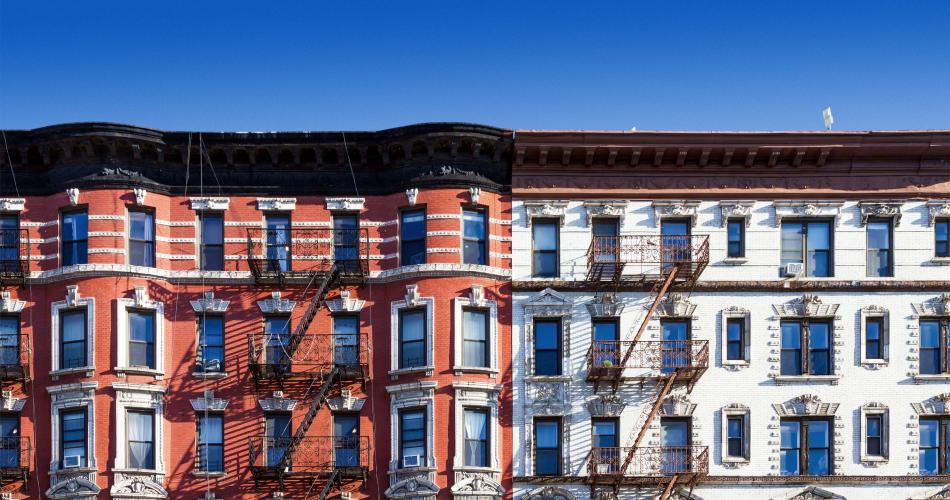Reading time: 7 minutes
For the past few months, Up for Growth Action has worked to support inclusion of federal emergency rental assistance in COVID relief legislation. With last week’s expiration of expanded unemployment benefits and the end of the federal eviction moratorium, the need for national rental assistance is at our doorstep. Just today, Kriston Capps at Bloomberg CityLab reported that the latest Census Bureau Household Pulse Survey indicates that one-third of American renters expect to miss their August rent payment. The convergence of large-scale nonpayment of rent coupled with the expiration of state and local eviction moratoria increase the likelihood of a wave of evictions across the nation.
As I testified at a June 10 House Financial Services Committee hearing “the COVID-19 crisis has rapidly exposed the fragility of America’s housing ecosystem. Failure to address the looming rent crisis will have dire consequences for millions of Americans and for a housing ecosystem that underpins our economy. It was already under strain from a severe shortage of homes.”
Against a backdrop of an already-fragile housing system experiencing a wave of evictions, it would be easy to assume that rents would decrease as landlords struggle to fill these unoccupied homes. But in reality, leaving the rental housing market to stabilize on its own is not a viable option because it will force too many already struggling renters deeper into short term – and potentially long term – housing insecurity.
The affordability effects of the rental shortage are stratified, with the most acute effects on lower-income renters. Insufficient production of new housing has created immense pressure on existing naturally occurring affordable housing (NOAH); due to the country’s 7.3-million-home shortage, wealthier renters were already occupying units that would otherwise be available for low to middle-income renters in a well-functioning market.
NOAH is generally described as “Class B” or “Class C” existing unsubsidized housing that is affordable for low- and middle-income renters. The existing housing shortage was already increasing redevelopment pressure of NOAH, detailed in an article from Shelterforce, and advocates have long been calling for concerted policy interventions to protect NOAH from becoming unaffordable.
With a national housing crisis exacerbated by COVID-19, what happens if Congress doesn’t act?
First, the wave of evictions would be disproportionately concentrated in NOAH. Evictions will likely be much more modest for “Class A” new multifamily housing, which is affordable only to the highest income renters. NMHC’s Rent Payment Tracker data, which primarily tracks the newest, institutionally owned multifamily housing, backs this up. It found a negligible variance in total collections as of July 27, 2020 vs. July 27, 2019 of 93.3% collections versus 95.3% collections.
Secondly, and perhaps counterintuitively, rents in Class A new multifamily housing likely will not go down even if evictions rise across the market. There are a few reasons why. The median income of tenants in these properties is very high. It is not unusual for the typical tenant in a new Class A property to make 150%+ of Area Median Income (AMI) – and pay approximately 20% or less of their income on rent. As a result, they are in a much better position to absorb the economic shocks associated with the pandemic. Moreover, these high-income tenants are much less likely to work in the fields most susceptible to COVID-19-related job losses. In addition, ownership of these properties are largely institutional investors like real estate investment trusts, life insurance companies, and pension funds who typically carry little or no mortgage debt. Even if these property owners experience a significant drop in rent payments from tenants, they will likely not have trouble continuing to make required debt service payments and meet loan covenants.
Finally, the cost of building Class A new multifamily communities effectively create a floor on rent. Owners, with long-term and patient capital, may offer concessions (e.g. a month or more of free rent), but are economically unable to reduce face rent. In a soft economic environment, tenants who might otherwise lease new, Class A multifamily apartments, gravitate to “value” options in existing NOAH housing stock. This “renting down” phenomenon increases both demand and rent levels for NOAH. Meanwhile, Class A properties will likely see increasing vacancy rates with little deterioration of face rent. Renting down also accelerates the pressure described above in the Shelterforce article.
Moreover, as vacancies rise in Class A multifamily developments, the financial feasibility for new multifamily housing development will decrease – impairing the ability for market-rate housing developers to produce necessary new supply. As you might imagine, hindering the development of new housing will exacerbate the housing crisis that existed prior to COVID-19, and will make it worse when we emerge from the pandemic.
All of these dynamics carry very real consequences for Americans who rely on rental housing. As Ann Olivia, Visiting Senior Fellow with the Center on Budget and Policy Priorities testified in the June 10 House Financial Services Committee hearing I mentioned earlier, “eviction leads to long-term housing instability and a sort of spiraling effect over the long term. So, if we do nothing now we will see increased homelessness and increased housing instability that we will have to deal with down the road.”
Hoping for the rental payment crisis to solve itself or simply go away is not an option. The only feasible way to ensure that people can stay in their homes, rent is paid on time, and the country does not experience another housing-related financial market collapse is to pass robust federal emergency rental assistance.
